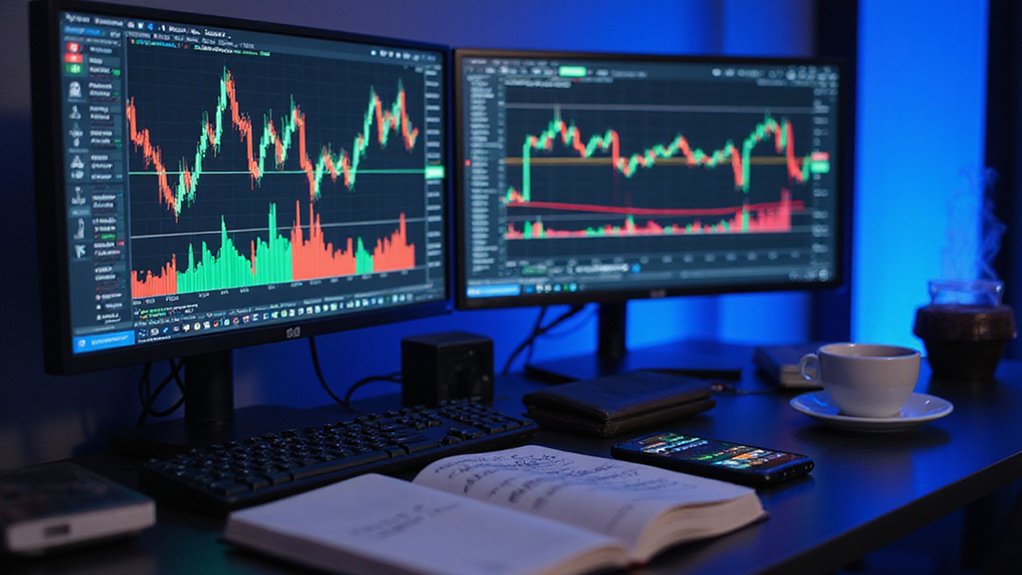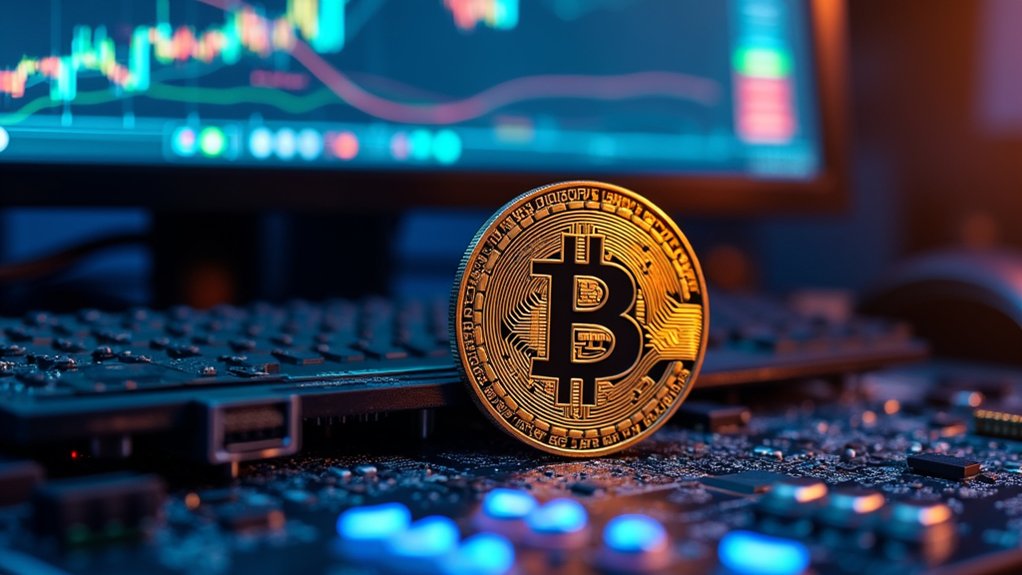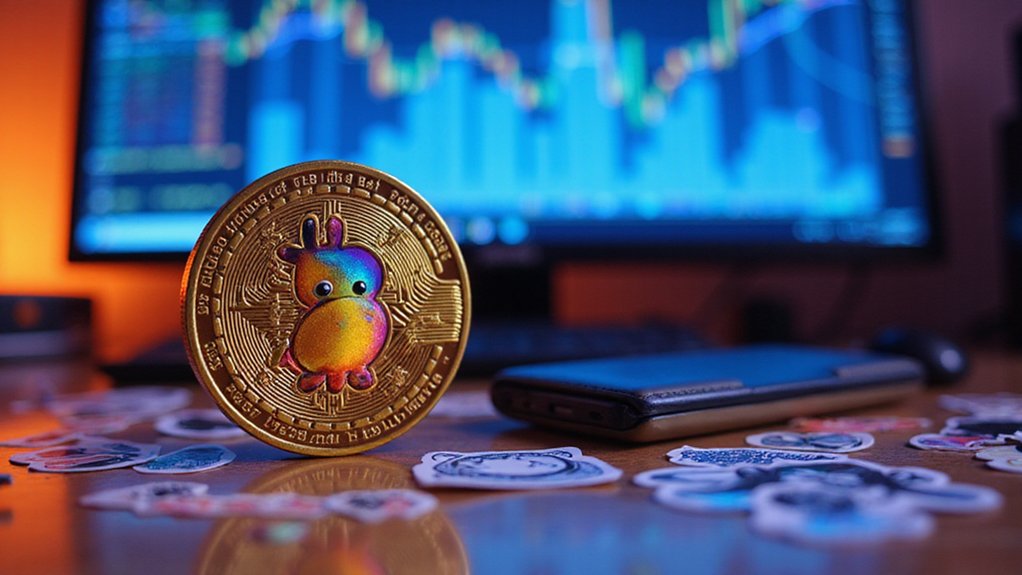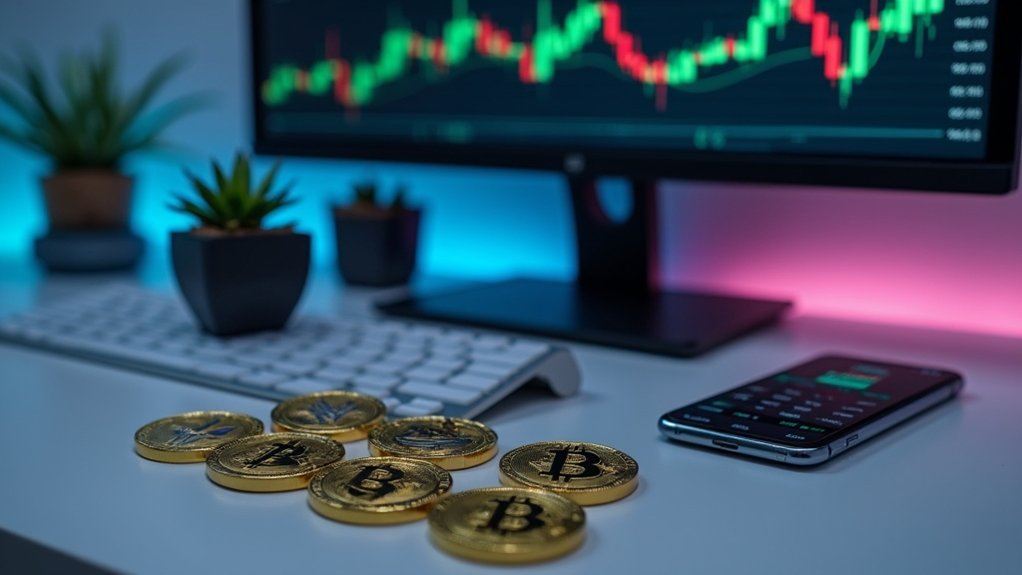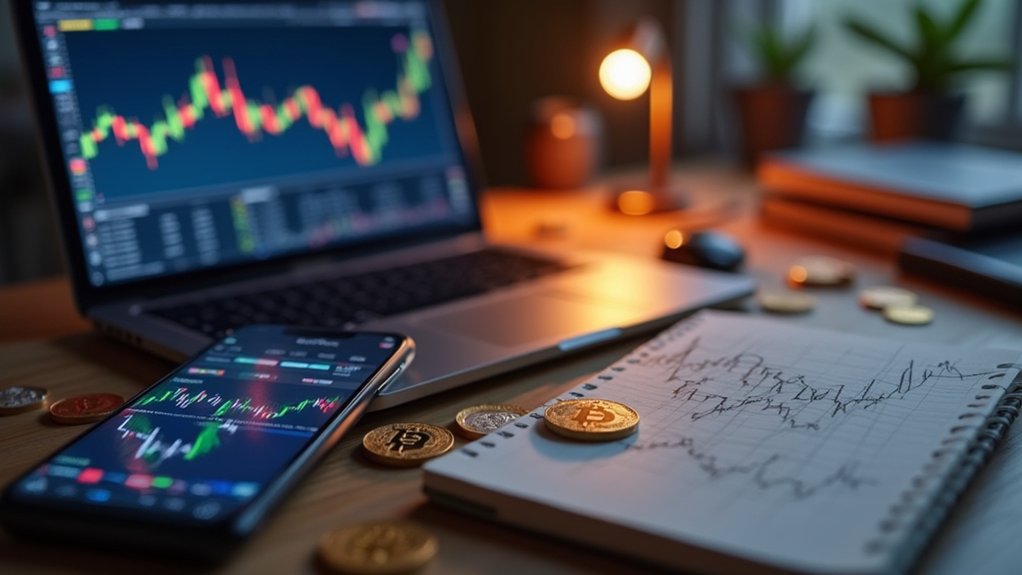Successful cryptocurrency day trading requires disciplined risk management (limiting positions to 1-2% of capital), technical analysis competence, and emotional control. Beginners should establish strict stop-losses at 1-3% below entry, analyze candlestick patterns alongside moving averages, and avoid overtrading. While the 24/7 market’s volatility creates profitable opportunities, most traders fail by chasing pumps without confirmation or succumbing to FOMO. A methodical approach with proper tools—reputable exchanges, real-time data, and automated protections—separates the survivors from the decimated.
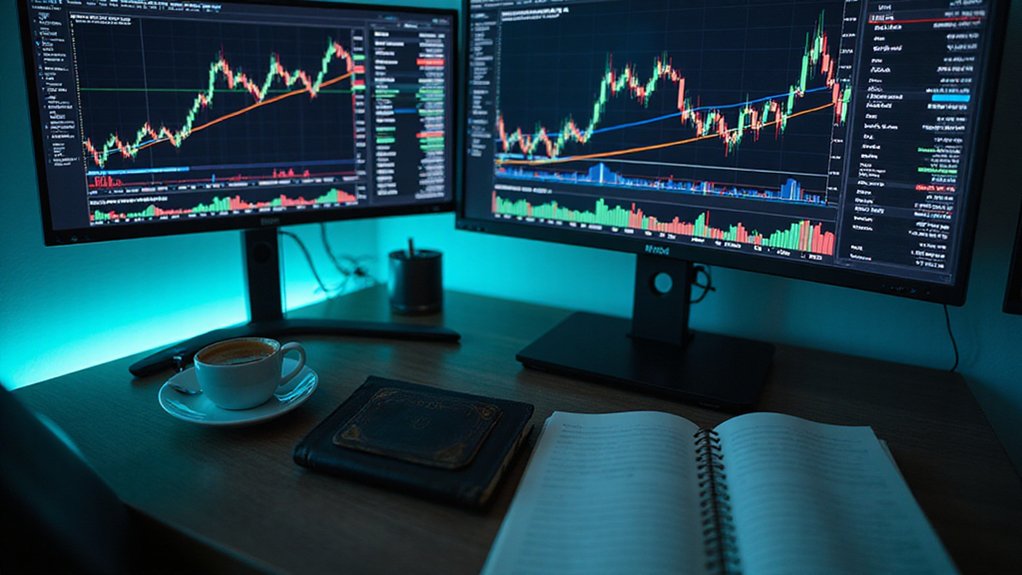
Why do cryptocurrency markets—with their notorious volatility and round-the-clock trading schedules—continue to attract droves of aspiring day traders despite the sobering reality that most will ultimately fail?
The allure lies precisely in what makes these markets treacherous: price swings that create profit opportunities unimaginable in traditional securities, alongside accessibility that requires merely an internet connection and modest capital (rather than the institutional backing necessary in conventional finance).
Cryptocurrency’s paradoxical appeal: violent volatility creating untold opportunity within markets anyone can enter with minimal resources.
Successful cryptocurrency day trading demands an arsenal of essential tools, beginning with a reputable exchange offering deep liquidity across multiple trading pairs.
Traders must arm themselves with technical analysis platforms featuring candlestick charts, moving averages, and Bollinger Bands—the cartography by which one navigates the cryptosphere’s tumultuous terrain.
Real-time market data and order book visibility function as the trader’s periscope, while automated stop-loss mechanisms serve as the ejection seat when positions deteriorate.
The foundation of sustainable trading rests upon risk management protocols that veterans follow with religious discipline.
Allocating merely 1-2% of capital per position and implementing strict stop-loss orders at 1-3% below entry prevents the catastrophic account implosions that regularly claim novice traders who succumb to FOMO¹.
The mathematics are unforgiving: without position sizing constraints, even a respectable win rate cannot overcome the decimation wrought by unchecked losses.
Technical analysis forms the lingua franca of day traders, who scrutinize candlestick formations, moving average crossovers, and volume patterns with the intensity of codebreakers.
Understanding how to interpret candlestick patterns is crucial, as they reveal price action dynamics where the body shows opening and closing prices while the wicks indicate the high and low extremes reached during the trading period.
Yet proficiency in chart reading matters little without a structured strategy, backtested against historical data and adapted to prevailing market conditions.
The most effective approaches combine multiple confirmation signals rather than relying on isolated indicators that frequently generate false positives.
The path to consistency requires avoiding common pitfalls: overtrading (which feeds exchanges through commission fees more reliably than it feeds traders), chasing pumps without confirmation, and neglecting external events that render technical analysis temporarily irrelevant.
Disciplined routine, meticulous record-keeping, and emotional detachment separate the minority who extract sustainable profits from the majority who merely contribute to market liquidity.
Many successful traders incorporate the Relative Strength Index to identify potential market reversals when cryptocurrencies reach overbought or oversold conditions, providing crucial entry and exit signals.
¹Fear Of Missing Out
Frequently Asked Questions
What Tax Implications Do Cryptocurrency Day Traders Face?
Cryptocurrency day traders face a labyrinth of tax obligations that would make even seasoned accountants wince.
Each trade—whether crypto-to-crypto or crypto-to-fiat—constitutes a taxable event requiring meticulous record-keeping.
Short-term gains (assets held <1 year) face ordinary income rates up to 37%, while the absence of wash sale rules creates both opportunities and compliance headaches.
Additionally, traders must navigate exchange reconciliation challenges, cost basis methodologies, and the ever-present specter of regulatory ambiguity in DeFi transactions.
How Do Crypto Market Manipulations Affect Day Trading Strategies?
Crypto market manipulations create a treacherous landscape for day traders, who must navigate artificially inflated volumes and manufactured price movements with the wariness of seasoned poker players spotting tells.
These distortions—whether pump-and-dump schemes orchestrated by whales or wash trading generating phantom liquidity—compromise technical analysis reliability and necessitate robust risk management protocols.
Successful traders develop manipulation detection skills, employing blockchain analytics and implementing strict position-sizing rules to survive in markets where price action often reflects coordinated deception rather than genuine market sentiment.
Can I Day Trade Cryptocurrency With a Full-Time Job?
Day trading cryptocurrency while maintaining full-time employment is technically possible but fraught with practical hurdles.
The time-intensive nature of effective trading (with 45% of traders dedicating 1-2 daily hours) collides with workplace obligations, potentially violating employer policies.
Success demands strategic time management—utilizing breaks or after-hours periods—coupled with realistic expectations.
Given that merely 4% of day traders sustain a living wage, part-time traders might consider less time-sensitive strategies or automated tools to navigate this precarious balancing act.
What Psychological Challenges Do New Crypto Day Traders Experience?
New crypto day traders often battle a psychological gauntlet: crippling FOMO driving impulsive decisions, cognitive biases like overconfidence (particularly among those least skilled—hello, Dunning-Kruger), and addiction-like patterns of compulsive portfolio checking.
The social media echo chamber doesn’t help, amplifying both euphoria and panic while normalizing high-risk behavior.
These neophytes frequently underestimate how emotional volatility—exacerbated by 24/7 markets and dramatic price swings—impairs rational decision-making during critical moments.
How Does Cryptocurrency Volatility Compare to Traditional Stock Markets?
Cryptocurrency volatility dwarfs traditional markets by every meaningful metric.
While the S&P 500 might consider a 2% daily swing significant, crypto traders barely raise an eyebrow at 10% fluctuations.
Bitcoin’s ~47% volatility utterly eclipses gold’s modest 12% and equities’ ~10%.
This volatility stems from 24/7 trading, limited institutional guardrails, speculative fervor, and regulatory uncertainty.
This creates both harrowing drawdowns (frequently exceeding 50%) and astronomical upside potential unimaginable in conventional markets.
